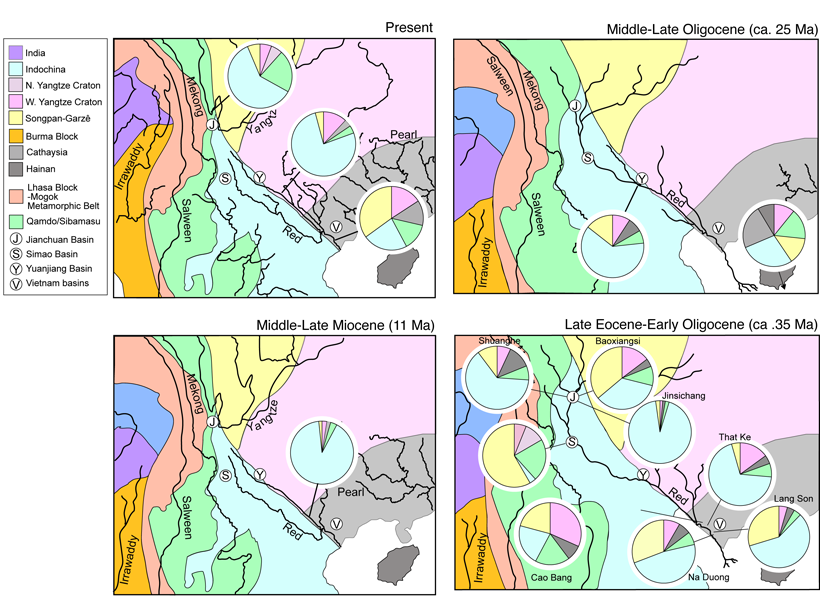Source: Geochemistry, Geophysics, Geosystems
River patterns in Indochina and the southeastern Tibetan Plateau have attracted significant attention from geoscientists for several decades. This is because of both the starkly anomalous courses of these rivers (with three of Asia’s largest rivers, the Yangtze, Mekong and Salween, flowing parallel and only a few tens of kilometers apart for hundreds of kilometers in southeast Tibet) and the obvious implications for the tectonic and topographic history of the region. Controversial interpretations of how this drainage pattern has come about have been proposed in the last two decades.
Clift et al. [2020] use a large database of zircon U-Pb ages from modern and ancient sediments in southern China and northern Vietnam to argue that a large change in drainage occurred between the Oligocene and the Miocene, specifically that in the Oligocene the Yangtze River flowed into the Red River, feeding sediments to Vietnam and the Gulf of Hanoi, before being captured and redirected to its present route at the “big bend”. The work also shows how recently developed quantitative statistical tests can be used to compare zircon U-Pb age patterns between samples, rather than relying on solely visual or qualitative comparison.
Citation: Clift, P. D., Carter, A., Wysocka, A., Van Hoang, L., Zheng, H., & Neubeck, N. [2020]. A Late Eocene‐Oligocene through‐flowing river between the Upper Yangtze and South China Sea. Geochemistry, Geophysics, Geosystems, 21, e2020GC009046. https://doi.org/10.1029/2020GC009046
—Peter van der Beek, Editor, Geochemistry, Geophysics, Geosystems
Text © 2020. The authors. CC BY-NC-ND 3.0
Except where otherwise noted, images are subject to copyright. Any reuse without express permission from the copyright owner is prohibited.

